In the address of the president of the Republic of Kazakhstan K. K. Tokayev on September 2, 2020, the tasks were set to ensure the annual growth of the economy, increase the export of processed goods.
When carrying out the evaporation process under atmospheric pressure, secondary steam, as a rule, is not used and is released into the atmosphere. When evaporating under high pressure, it can be used as a heating element in secondary steam burners, for heating, for technological needs.
Purpose: to develop a mathematical model of a multi-body evaporation plant for evaporation of sugar syrup in order to modernize its design.
Keywords: sugar syrup, multi-body evaporator apparatus, mathematical model.
The implementation of the sugar syrup production cycle leads, among other things, to the need to justify the technology of sugar syrup used by conducting research on experimental and experimental-industrial equipment [1].
In the processing technologies used for the production of sugar syrup, the method of continuous evaporation is often used-conditioning of liquid waste, consolidation of Target products in the sugar production line. Therefore, ensuring an effective continuous mode of the technological redistribution circuit will depend on the operation of the evaporative equipment. Its significant difference from similar devices is the small volume due to the relatively small volume of production in ensuring defense performance and Nuclear Safety [1].
The complexity of the development of automatic control systems of such devices is determined, among other things, by multi-linearity, significant nonlinearity over individual control channels, as well as the lack of self-alignment. Therefore, to carry out computational studies on possible options for an automatic control system with a single-body evaporator with a heating chamber for evaporating a sugar syrup solution (See Figure 1). It is necessary to build its mathematical model, which describes the dynamic relationships between the main technological variables. At the same time, according to the rules adopted in engineering practice, due to the approximate nature of the formulas for the analytical calculation of the parameters of tuning regulators, 10 % accuracy of the model is sufficient for the synthesis of an Automatic Control System [2].
The mathematical model of the evaporation process of sugar syrup should reflect:
— the dynamics of changes in the level of the solution in the apparatus depending on the consumption of the initial solution of sugar syrup, evaporated sugar syrup, phlegm and heating vapor;
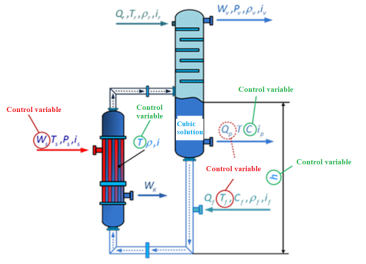
Fig. 1. Scheme of the evaporative apparatus: ρ, ρ v , ρ r , ρ f — density of the solution in the apparatus, secondary vapor, phlegm, primary solution of sugar syrup, kg / m3; W k -mass consumption of condensate, kg / h; i, i s , i f , i r , i v — enthalpy of the solution in the apparatus, heating Steam, Input solution, phlegm and secondary vapor, J / kg
— dynamics of changes in the concentration/density of the evaporated solution depending on the flow rate and concentration/density of the initial solution and phlegm, the flow rate of the syrup and heating vapor of the evaporated syrup;
— dynamics of changes in the temperature of the solution in the apparatus depending on the temperature of the initial solution, phlegm, heating vapor and pressure in the steam supply network to the heating chamber.
In addition, the model should take into account the mutual influence of the output controlled parameters of the above object on each other. As a rule, when constructing analytical models of the chemical apparatus, the mathematical description is reduced to the construction of equations of material and thermal balances of the system based on the Basic Laws of nature: the laws of conservation of mass and energy [3–6]. Thermodynamic properties of the evaporating product, physical and thermodynamic parameters of heating and juice vapor, as well as data necessary to characterize heat loss to the environment, etc. since there was no a priori information about it, it was necessary to greatly simplify the mathematical description. As a result, the dynamics of material, elemental and thermal flows in the device is characterized by the following system of equations:
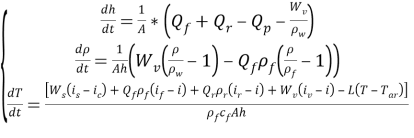
where A is the cross-sectional area of the evaporator, M2; c_f is the specific heat capacity of the input solution, KJ /(°С ×kg); ρ_w is the density of water, kg / m3, and the mass consumption of secondary steam determined by W v is determined by the following algebraic expression:

The enthalpies of heating, secondary steam and condensate are determined by the expression obtained by approximating tabular data:



The developed approach and mathematical description of the evaporator apparatus as a control object were implemented in the form of a computer model in the MATLAB/Simulink package. To verify the qualitative compliance of the model, the results of the study of the evaporative apparatus presented in the work were used [7], where a two-stage vacuum-evaporative «Unit» was used as one of the objects of research. Figure 2 presents the transition characteristics by level in the second apparatus of the unit, when the consumption of the feeding solution changes by 62 % to the apparatus ∆S f =1700 kg/h and the corresponding transition mode in the developed model of the apparatus for evaporating sugar syrup.
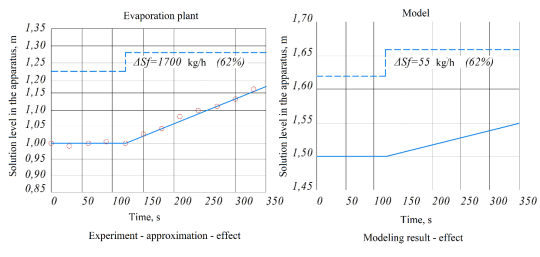
Fig. 2. The ratio of the solution level in the apparatus to the time
In Figure 2, level transients as can be seen from the graphs, the nature of the level change in both cases is the same and a given channel of the control object can be described using an astatic reference. Figure 3 presents the transient characteristics by concentration in the first apparatus of the unit, when the fluid flow from the apparatus changes by ∆S p =-250 kg/h i. e. by -30 %, and the corresponding transient mode in the developed VA computer model.
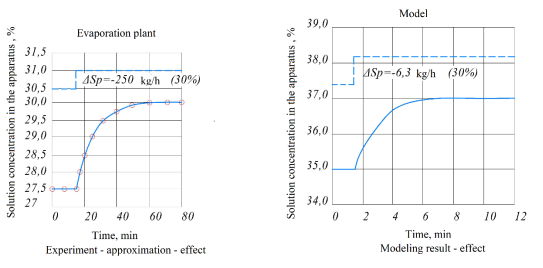
Fig. 3. Ratio of solution concentration in the apparatus to time
In Figure 3, concentration transients the graphs given above show that the transients in the evaporation unit and in terms of the concentration obtained as a result of the simulation coincide at a qualitative level. In addition, it can be observed that an object in this channel can be characterized by an aperiodic syllable of the first order. Figure 4 presents transient characteristics by the temperature of the solution in the first apparatus of the unit unit, when the consumption of heating steam from the device changes by ∆S p =480 kg/h i. e. by 17 %, and the corresponding transient mode in the developed computer model VA.
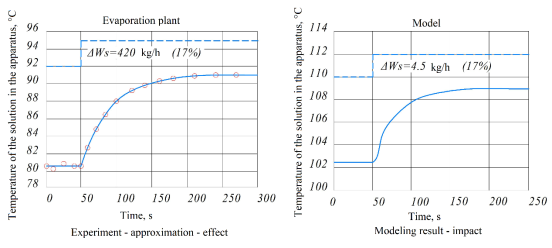
Fig. 4. The ratio of the temperature of the solution in the apparatus to the time
In Figure 4, temperature transients the graphs given above show that the temperature transients obtained in the evaporator and as a result of the simulation correspond at a qualitative level. In addition, it can be observed that an object in this channel can be characterized by an aperiodic link of the first order in terms of concentration. Comparison of simulation results with data shows their qualitative correspondence. The analysis of the above transition processes shows that the time constant in terms of concentration/density of the evaporation apparatus is significantly higher than the time constant in terms of level and temperature. This circumstance must be taken into account when developing an automatic control system with an evaporator. The quantitative conformity test of the developed model was carried out according to experimental data obtained at the laboratory evaporation stand of the Almaty Technological University in Almaty. This stand is equipped with an automated control system, on the basis of which there are two control algorithms. The first algorithm is designed for evaporation mode with a given frequency. In this case, the level of the cubic solution was constant by adjusting the flow rate of the initial solution. In the non-stationary mode (until the given density of the solution is reached), the cubic solution is not fused. In a continuous mode, the solution was combined in an amount proportional to the average consumption of the initial solution. The second algorithm provided a given density of the solution at the output of the evaporator unit in a continuous mode. Maintaining a given density of the cubic solution was carried out by the flow of the initial solution, and maintaining the level was carried out by draining the cubic solution.
The following experiment was carried out on the installation. After the initial filling with the initial solution and the start of the evaporation process in the start mode, the process control proceeded according to the first algorithm in the non-stationary mode. After the given density reached the value of

A transition process was recorded when, after entering the stationary mode, the installation of the density regulator changed from


A similar experiment was done on a computer model of the evaporator. The experimental data and simulation results are presented in Figure 5A.
Another experiment was carried out on the stand, in which, after the given density reached the value


Conclusion. The relative mean square error of multiplying the level, density and temperature of the solution was less than 9 %, 5 % and 7 %, respectively, which satisfies the requirements. Thus, in the course of the work, the qualitative and quantitative correspondence of the developed computer model was confirmed, which makes it possible to use it in the development of sau va.
References:
- Automatic control of evaporation equipment in technologies of spent nuclear fuel reprocessing / I. Y. Shevyakov, K. A. Kozin, A. G. Goryunov, F. E. Hoffman, B. Ya. Zilberman, D. V. Ryabkov // VI International Scientific and Practical Conference «Physico-technical problems of atomic science, energy and industry»: collection of tez. dokl. / Tomsk Polytechnic University. un-T. — Tomsk, 2014. — p. 52.
- Tarasov, R. V. The choice of optimization parameter and factors in preparation for an active experiment [Text] / R. V. Tarasov, L. V. Makarova, O. F. Akzhigitova // Modern scientific research and innovation. — April 2014. — No. 4 [Electronic resource]. URL: http://web.snauka.ru/issues/2014/04/33940
- Kafarov V. V., Glebov M. B. Mathematical modeling of the main processes of chemical production: Textbook for universities. — M.: Higher School, 1991. — 400 p.
- Nonlinear regression, [Electronic resource]. Access mode: http://kurs.ido.tpu.ru/courses/econometrica/tema9.htm
- Lutsenko V. A., Finyakin L. N. Analog computing machines in chemistry of chemical technology. — 2nd ed. reprint. and additional — M.: Chemistry, 1979 — (series «Chemical Cybernetics»). — 248 p.
- GOST 21–94. Granulated sugar. Technical specifications [Text]. — Instead of GOST 21–78. — Moscow: Publishing House of Standards, 1997. — 14 p.
- Taubman E. I. Calculation and modeling of evaporation plants. — M.: Chemistry, 1970. — 216 p.







